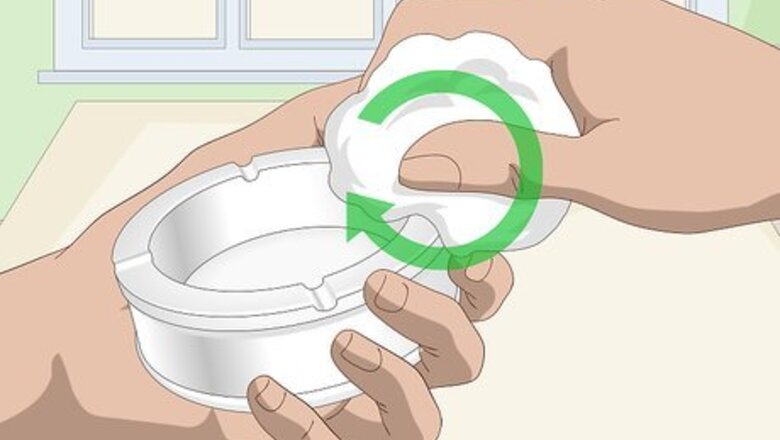
views
Cleaning with Water
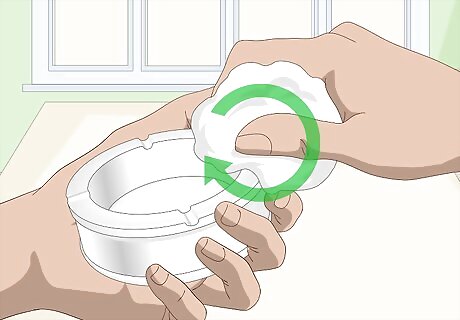
Polish the nickel with a soft cloth. Before trying anything else, see how much grime you can clean by wiping it away. Many grease spots, smudges, and patches of grime can be buffed away with cloth and a little bit of warm, running water. Use a soft, non-abrasive cloth and rub down the nickel plating, applying extra pressure and attention to dirtied areas. Use small, circular motions to buff away the grime.
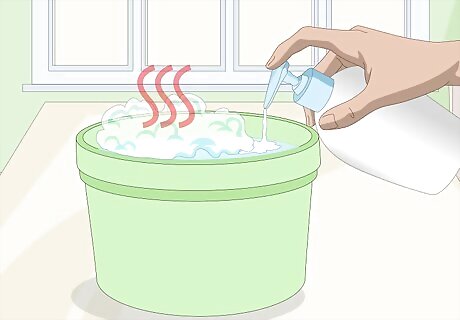
Prepare a solution of soapy water. Cleaning with soap and water is always gentler than using acid and should be tried first. Choose a mild dishwashing detergent. Fill a container full of warm water and add the detergent until the water appears soapy. Hot water, cold water, and abrasive soap will all damage the plating.
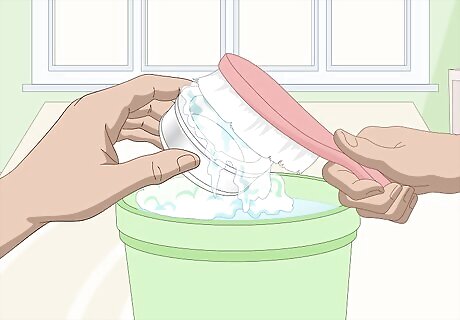
Wash the nickel plating. The way you do this up to you and the supply of soapy water you have. Small objects can be washed in or near a container of soapy water. For larger objects such as nickel-plated stoves or immobile objects such as shower heads, take a soft cloth, dip it in the water, and use that to buff out the stains. Avoid using harsh scrubbers as much as possible, as they damage nickel plating.

Rinse off the soap. Run the plated object under running warm water. For larger, immobile objects, gather more clean water. Pour the water on the area or use a soft, clean cloth dipped in water to remove the soap. Try doing this once a year to keep the staining and stress on the nickel plating to a minimum.
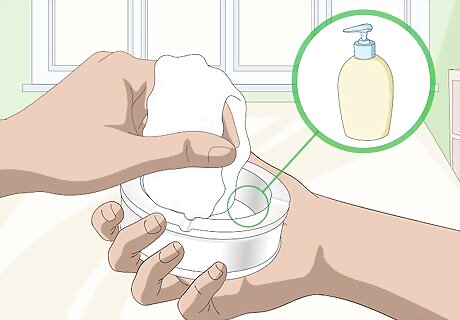
Dry it off. Take a clean, soft cloth. Pass it over the wet areas. Make sure you remove all the water so it doesn’t seep into the nickel. This also gives you a chance to check for any remaining soap that needs to be removed. Keep working with the cloth until the plating is dry.
Using Bottled Cleaners
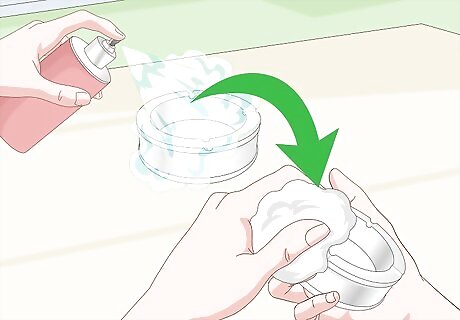
Polish with metal polish. When your nickel plating isn’t dirty enough to warrant harsher cleaning methods, apply a non-abrasive metal polish. Chrome polish works well on nickel plating. Apply a small amount of the polish to the plating, then wipe the surface in circular motions as you did while cleaning. Alternatively, you can try this step after using other cleaning methods in order to make your nickel plating shine.
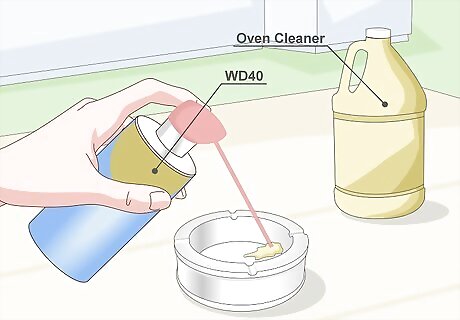
Apply a metal cleaner on discolorations. Find a non-abrasive metal cleaner at the store. Chrome cleaner works well on nickel plating. Apply the cleaner directly to the stained areas, particularly the green discolorations that build up on nickel with ease. Let it sit for a minute. WD40, which penetrates oil, can also be used. Oven cleaners are another option and are useful for removing grease. You may wish to test this method on a small spot not readily visible. If the plating is especially thin, the steel wool or scrubber will cause damage.
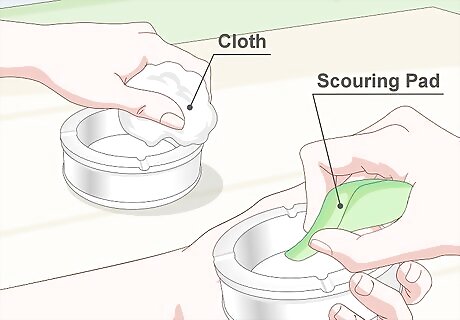
Scrub the plating. After applying the bottled cleaner, try using a cloth first spread it over the plating. You can also use steel wool or a soft scouring pad on stubborn stains and discolorations. Use small, circular motions to work in the cleaner. Be as gentle as possible to avoid causing scratches to the metal.
Cleaning with Vinegar

Prepare a vinegar cloth. Vinegar is a mild acid that has great effect on stains. Pour a small quantity of vinegar into a bowl. Soak a clean, soft cloth in the vinegar. Wring out the excess.
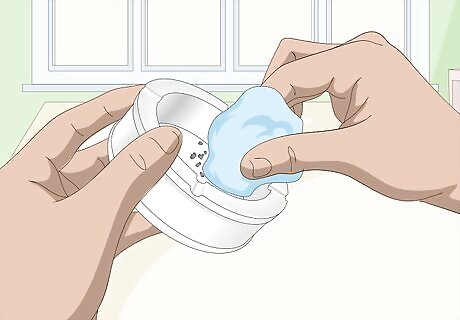
Scrub the dirty areas. Apply the vinegar cloth and gently attempt to buff out the stains. Move the cloth in circular motions with a gentle touch to avoid stressing the nickel as much as possible. Re-soak the cloth as needed.

Make a solution of vinegar and water. For stubborn stains, you may need to soak the nickel plating. Combine four parts water with one part vinegar in a container that will either contain the nickel piece or hold enough solution to put on the stains. Do not use straight vinegar. It is often too abrasive to expose to thin nickel coatings for extended periods. Nickel plating is easily damaged by acid, so vinegar cleaning should be done sparingly on stubborn stains. You can heat up your mixture to give it a little more cleaning power if you desire. This should only be done if the object won’t be soaked in it.
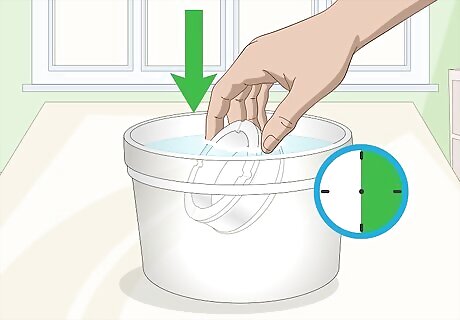
Soak the nickel in the solution. Soak the nickel-plated item in the solution for several hours. The stains should have begun to lift. Alternatively, pour the vinegar solution over the object and let it rest for 30 minutes. Repeat as necessary.

Rinse the plating. Use warm running water or apply a soft cloth dampened in water. Make sure all the vinegar is gone. Vinegar left on the plating will continue to wear away at it. Wipe with a second cloth if necessary to make sure it is all gone.
Applying Ammonia
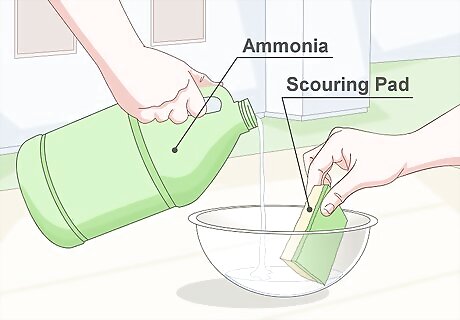
Prepare an ammonia pad. Ammonia, like vinegar, is effective on stains. Pour a small amount of pure household ammonia into a bowl. Drip a scouring pad or rag into it.

Scrub the dirty areas. Apply your pad or rag gently to the object. Scrub with increasing intensity on the deep stains. This is best done on pure nickel to minimize the abrasion from the pad and cleaner.

Make a solution of ammonia and water. For a more intense cleaning solution, combine one part ammonia to three parts water. Never submerge the nickel plating in straight ammonia; after 30 minutes it will cause the plating to chip and flake.
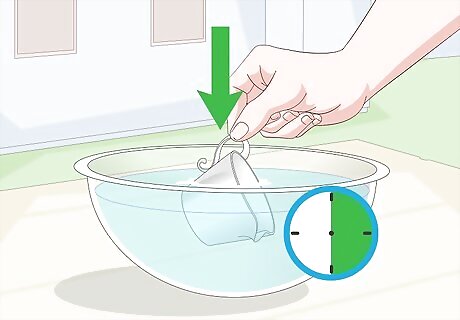
Soak the object in the solution. Place your object in the container. You can also pour the solution over the object. Let it sit in the ammonia mixture for up to 30 minutes.

Rinse the plating. Use warm, running water to wash away the ammonia. Another option is to use clean, soft rag dipped in warm water. Run the water or rag over your plated item, making sure all the ammonia is removed.

















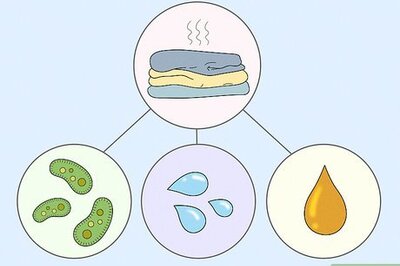
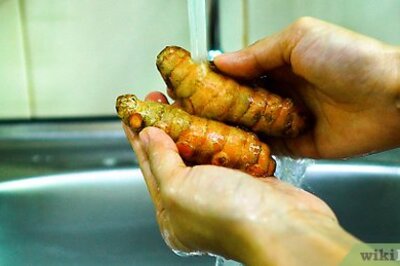

Comments
0 comment